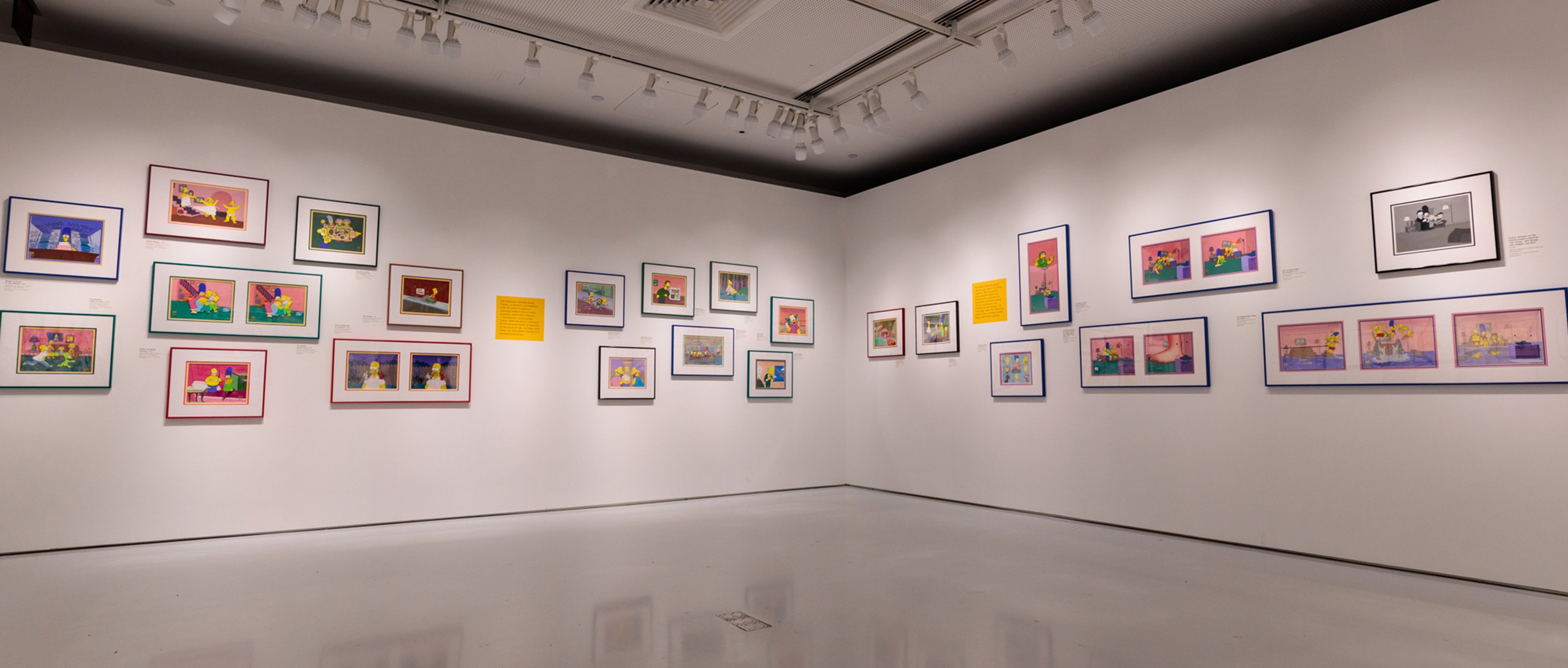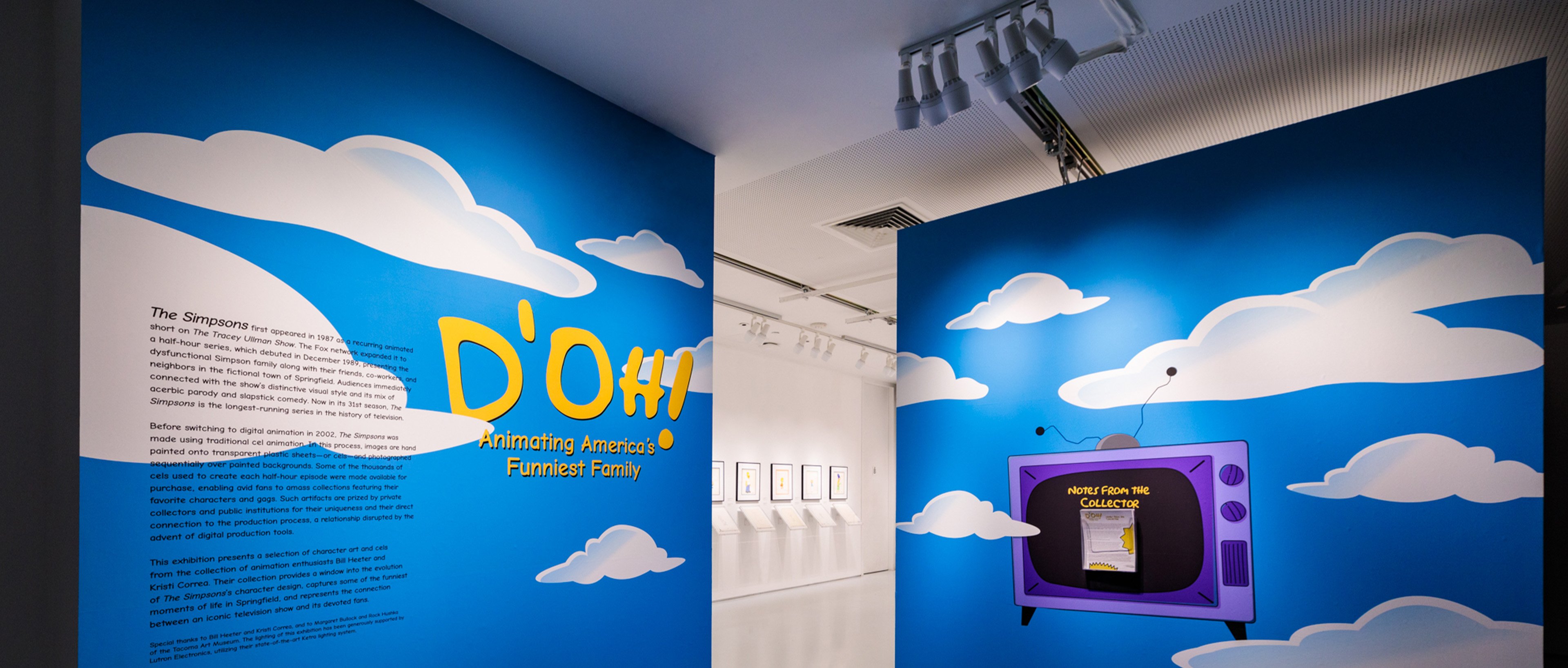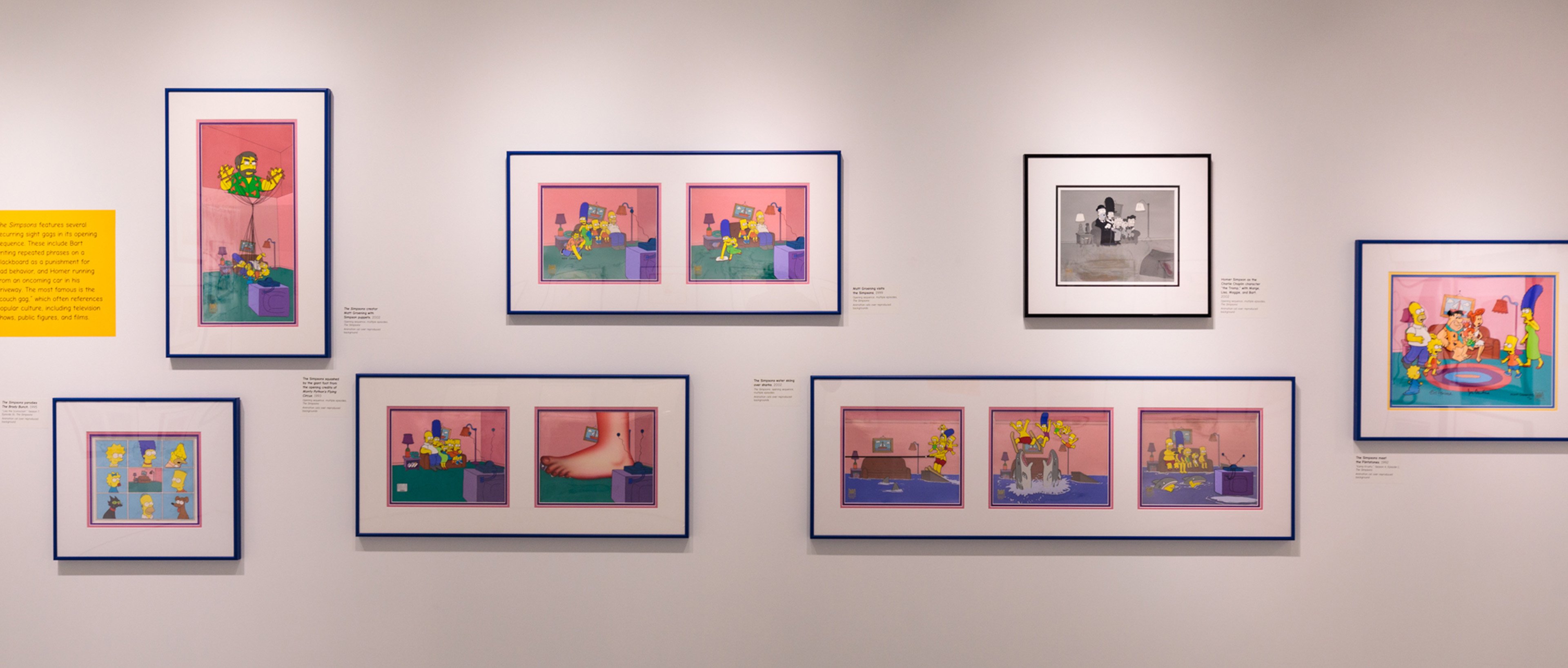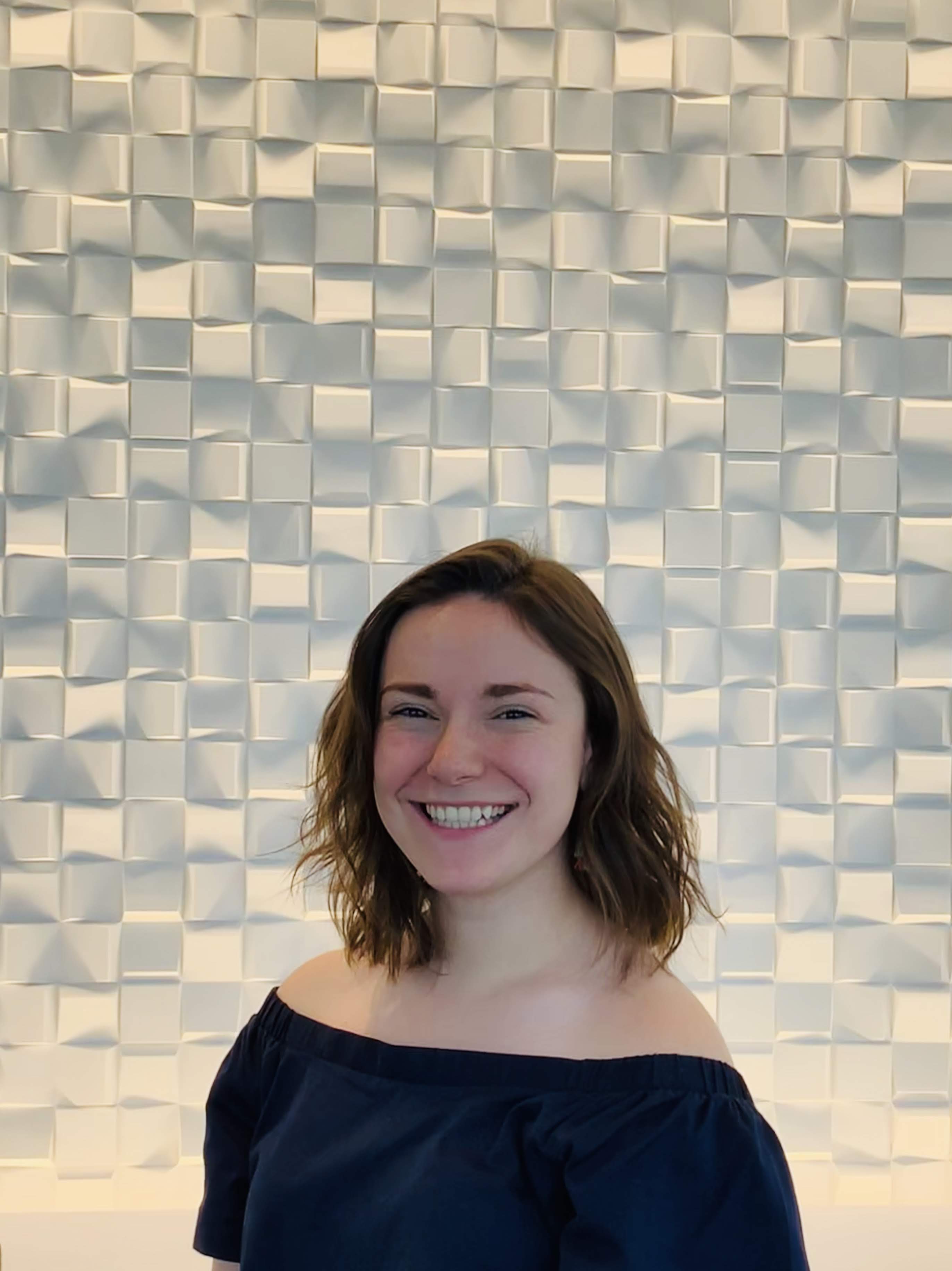
"D'oh! Animating America's Funniest Family" exhibit at the Museum of the Moving Image
1. What is your role at Museum of the Moving Image (MoMI)?
I think I have the honor of the longest title at the museum: Deputy Director for Operations, Exhibitions, and Design—but the short answer is that I oversee the building and everything in it. My background is in exhibition design, so I always have a special role in our exhibits, ranging from handling the artifacts and preparing them for installation, to working on the production of future exhibits. I also oversee all graphic design and production, the overall look and feel of the museum’s public spaces, and our digital footprint. Of all these responsibilities, exhibits are my favorite and first love. Beyond wanting a sensible flow of traffic, any exhibition needs to be visually accessible, appealing, and interesting for both a group of 40 kids, and an individual viewer—and it’s got to do this while meeting all legal assembly and egress requirements alongside considering object safety, conservation and design concerns … and it’s got to stay within the budget and on schedule!
2. How is MoMI different from other museums?
Our mission is unique—we're not a film museum. We explore the moving image in all its forms, starting with magic lanterns and other optical toys from the 19th century. We collect and explore, through exhibitions and online projects, the development, production, and use of a broad range of movie and TV equipment. We also educate viewers on related production processes, alongside the notion of interacting with the screen and the development of video games—and then there’s the exploration of digital media and virtual worlds—pretty broad and all part of our mission.
3. Tell us about the new exhibit “D’oh! Animating America’s Funniest Family.”
This exhibition is curated from a private collection of material from the longest-running (primetime scripted) series in television history: The Simpsons. The first 13 seasons of the show used hand-painted animation cels like those on view, and you can really see the care and skill that went into making the characters we know and love. Unfortunately, our gallery space wasn’t large enough to show the complete collection, so Barbara Miller, my wonderful colleague who served as the curator of this exhibition, chose the individual works to be included and organized them into sections that tell the story of how the show came to be, who the main characters are, and many classic scenes and scenarios. It’s especially cool to see the creation process for some of the recurring scenes, like the couch gag from the opening credits.
Ketra really brought the cels to life in a way that wouldn’t be possible with our ordinary lighting system.
4. How does the Ketra lighting enhance this exhibit?
This exhibit has lots of bright, saturated colors and Ketra gave me many options for balancing the light on each page. Using the Vibrancy feature I was able to subtly pull out the colors, to really make the pieces pop but do so in a way doesn’t make the images’ colors look altered. It really brought the cels to life in a way that wouldn’t be possible with our ordinary lighting system.
There was a learning curve; it took me a while to grasp what should have been obvious—that it’s the bulb that’s doing the work, not the fixture! The Lutron team helped me with the programming, and I was able to create the ideal setting and then build on top of that baseline setting.
Using Ketra alters the way I think about the lighting process—it's so flexible and capable. When I was first putting the exhibit together, I went to the Ketra showroom in Manhattan and got the full magical tour. I’m excited to now have a bit more time to play with the lights in the gallery to fully understand their capabilities.

The whimsical entrance to the exhibit at MoMI
5. What's the goal of lighting in a museum setting?
Bringing an exhibition’s content to life. Budget often requires innovative approaches with overly recycled screens, gels, and lenses. This is what’s so incredible about the Ketra system—it’s so good at creating that magic in the space without any accessories. It really comes down to being able to place the light specifically where you want it, with the right color temperature, and exactly the right intensity. Ketra is amazing on all these points.
6. What are some of the challenges in choosing lighting for an exhibit?
Usually budget and infrastructure. We had a major expansion and renovation in 2011 that doubled the size of the museum. As part of that process it was important to look at the adaptability of the lighting system to make sure that it can pivot to many different types of exhibits, and to provide a grid system that will allow you to get light where you need it when you need it. Of course, it’s always a balancing act between practical (money and schedule) aspects and the ideal vision. We’re in the process of rethinking our core exhibit, Behind the Screen, right now, and I’m excited to explore the use of Ketra in those galleries.

A wall of animation cels from the hit show "The Simpsons" lit by Ketra light
7. Though we are unable to visit right now, is there any way to experience the museum virtually?
We’re always available on our website and through social media channels. Our staff has been working hard to deliver interesting, fun content throughout this unforeseen closure. For example, we just hosted a panel discussion with experts from the Jim Henson Company Archives, the Smithsonian's National Museum of American History, the Center for Puppetry Arts in Atlanta, and our own Barbara Miller to discuss Jim Henson’s work in our, and the other museums’, permanent collections. I also want to make sure guests know that we are still here, and we look forward to re-opening our galleries as soon as possible. It’s a difficult time for everyone, and New York has been hit especially hard.
Despite this, one of the things I love about this city is how New Yorkers have always come together in times of crisis. There’s a group of NYC cultural institutions that meet in a video chat every day, over 200 people, to discuss new ideas and opportunities, share struggles, and support each other. The main assurance I come away with each day after that call is the commitment of the museum community—along with all New Yorkers and all Americans—to get us through this, and to rise on the other side with even brighter glowing colors!
Dive deeper into MoMI's exhibit with our case study or visit the Museum online at their website.

24/7 Technical Support:
1-844-LUTRON1 (588-7661)
lightingsupport@lutron.com
Customer Service:
Monday-Friday 8am- 5pm EST
1-844-LUTRON1 (588-7661)
The Ketra logo, Ketra, TruBeam, Color Lock, and Calibration360 are trademarks or registered trademarks of Lutron Electronics Co., Inc. in the US and/or other countries.
©2025 Lutron Electronics Co., Inc. All rights reserved.
Get inspired with all the best from Lutron and Ketra: exclusive news, project features, and more.